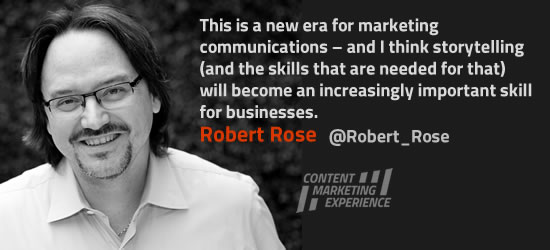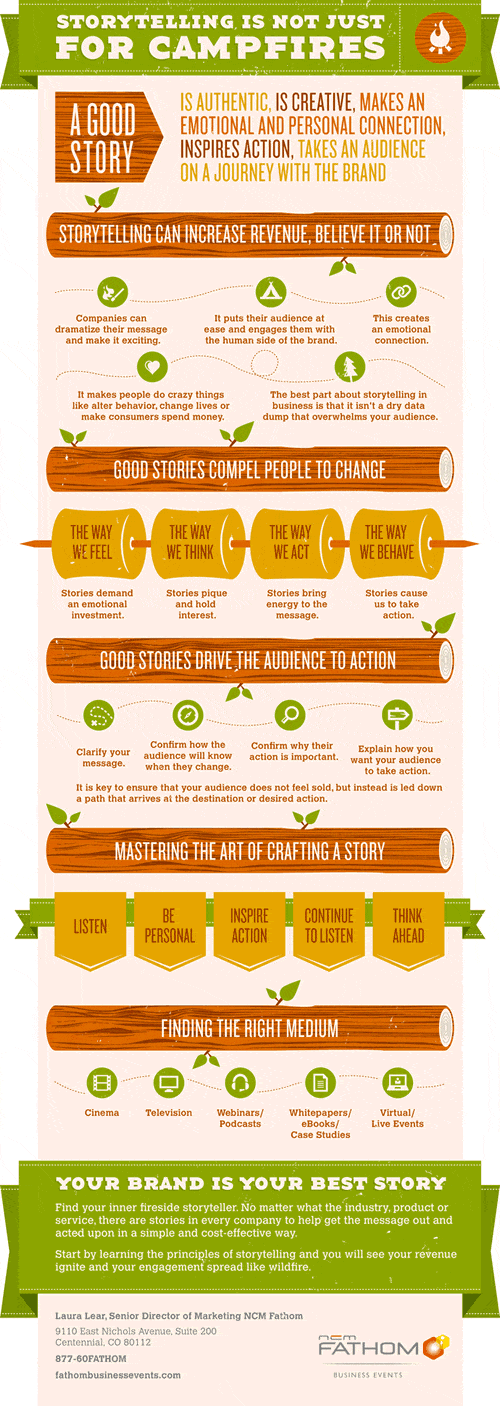Storytelling is one of the most powerful ways to breathe life into your brand and often called one of the main components of a content marketing approach. By giving your products and services an identity by capturing and sharing the stories they really are, you can take your target audience on a journey they yearn to experience. In order for consumers to form a personal connection with your brand, company stories must be authentic, creative and inspirational.

Emotional branding is a progressive marketing strategy that has the potential to drive revenue and increase customer retention.How a person feels about your brand typically determines whether they buy your product. A brand is a matter of perception. When you tell a story that embodies human challenges, you create an experience that resonates with your customers.
[the_ad id=”27933″]Fundamentals of storytelling
Stories are captivating for a reason. From childhood through adulthood, we are drawn to the lessons we learn, the exciting journeys we embark upon, the knowledge we gain and the opportunity to unleash our imaginations.
Stories celebrate our culture, and stories are a testament to the lives we have led. Stories also make messages pass easier. Remember that great teacher that used to tell stories about what he was teaching and how those stories made you remember better what you learned as compared with that boring teacher that just ‘teached’ and whose name you have probably forgotten? Finally we are social animals with language as the ultimate way of communicating, expressing emotions, perceiving the world around us and ourselves and even simply being. Storytelling is the oldest form of passing knowledge and much of how we look at what we like to call facts is influenced by stories and how we interpret them.
When crafting your brand story, you must illustrate what your voice is, what you stand for and why it matters to the lives of the audience that has its own stories. Outline actual steps to be taken and show readers how they can recognize the reward. The sell must be creative, yet subtle and often it’s indirect.
[blockquote author=”Lee Odden”]Stories are continuously evolving and spontaneous iterations are frequent based on community memes, popular culture and events. More.[/blockquote]Storytelling is not inventing a story. In fact, the very reason why your business exists, why you have developed products and services and why you do what you do is filled with stories.
You want to fulfill needs, respond to questions, engage on an emotional level, connect, find your voice and listen to voices in the the intersection of brand and audience. And the ways you have developed solutions and a value proposition is all about stories. It’s even possible to turn an internal sales kit about solutions in a narrative book, telling stories people can relate with.
Storytelling can be an approach in a specific project but also a way of writing and creating content, by coupling personal and existing stories to the brand narrative. Some people say all good content is storytelling. That’s a myth. Sometimes content just has to be purely informational. Good storytelling isn’t even directly about you, your brands and your solutions/products. It’s about emotions, experiences, needs and the written and unwritten images associated with these emotions and needs, in relationship to what your brand evokes.

Storytelling is not a one-off exercise but a matter of consistency and adapting to evolving human needs, although sometimes specific actions and initiatives can seem to have that one-off dimension.
However, everything you do, always fits in that broader narrative: from events and content to campaigns. Finally, note that storytelling is also per definition channel-agnostic and people-centric.
Just like a fairy tale, a captivating brand story must have three acts that set up the situation, chronicle the conflict and offer a resolution. However, business stories are unique because they require a fourth element – a call to action, which is often indirect.
The ultimate goal of marketing is to inspire, whether it motivates change, encourages the buying of a product or draws people into your store, regardless of the timeframe. Your desired outcome in the end drives the direction of the story.
Identifying stories to tell
Stories must be personal. Think about how your brand was born, what inspired you to create the company and what your personal mission is. But most of all think about what the needs of the ‘audience’ were when doing so.
The story must be compelling and often factual. While it is important to tell your own story, client narratives have the largest long-term impact on brands. The customer should be the main character, with your company serving as the supporting character that offers tools to help them create successful resolutions.
For example, if you sponsor a campaign to buy new playground equipment for a community center, the story should focus on why the equipment is needed and who benefits from it. Concentrate on one or two recipients, illustrating what the donation means to their lives. Praise should always come from another person, in the form of a quote, not from a company spokesperson.
Testimonials can be your most powerful weapon in building customer loyalty if they are told in the right way. A testimonial that is just a few sentences is forgettable, but a story that delves into a customer’s personal life and challenges, chronicles the lengths an employee goes to solve the problem and illustrates the positive outcome achieved will stick with readers long after they move on from your marketing materials.
Tapping the most effective medium
Any medium can be used to tell a story, including blogs, film, print, social channels and multimedia. Each medium elicits a different reaction from your audience, so stories must be tailored to fit. The key to success is knowing which story to tell in which medium. Short, snappy messages work best on television and the Internet, while online conversations, conferences and seminars provide a personal connection.
In order to be a good storyteller, you must listen to your audience so you can genuinely understand their desires and concerns, their beliefs and attitudes. You must continue to listen as your story unfolds so you can gauge the reactions of your audience. Let this help determine how your brand evolves. As your objectives and goals shift, you must plan new initiatives that propel the story forward and inspire renewed calls of action.
Emotion, authenticity, personal connections and driving to action. That’s what storytelling is all about and in this regard the old storytelling infographic below is still relevant.
The rules of storytelling haven’t changed that much, the scale and integrated approach have. But it still starts with listening and isn’t just about sharing.

More on storytelling:
- Digital storytelling: when art and science connect emotions
- The art of storytelling in 7 content marketing context questions
- Storytelling: do you pay and deserve attention?
- Robert Rose on content marketing and storytelling
- Content sharing and storytelling: why and how people share content
- Looking for more on content marketing? Check out the online guide.
The art of storytelling in 7 content marketing context questions

